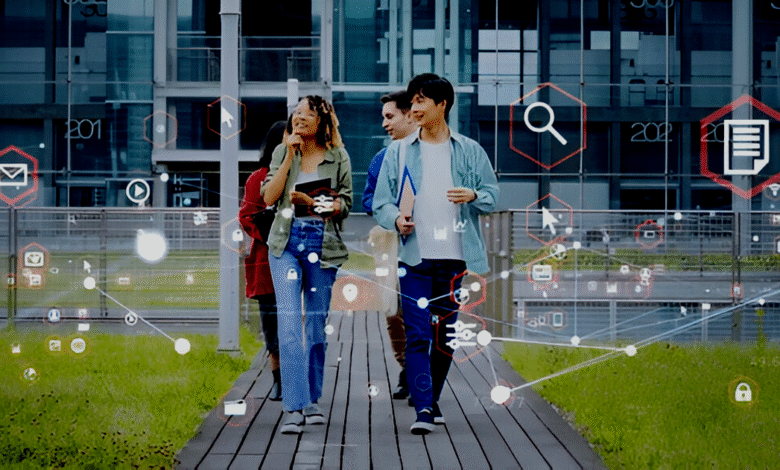Top 10 EdTech Tools Revolutionizing U.S. Classrooms in 2025
EdTech tools are transforming U.S. classrooms in 2025 Discover the top 10 innovative platforms reshaping education with AI VR and personalized learning.

The American education system is experiencing a digital revolution, with innovative EdTech tools transforming how students learn and teachers instruct in 2025. Gone are the days of one-size-fits-all education today’s classrooms leverage artificial intelligence, immersive technologies, and data-driven platforms to create personalized, engaging learning experiences. These cutting-edge tools are breaking down traditional barriers, enabling adaptive instruction, fostering collaboration, and preparing students for a tech-driven future. From AI tutors that customize lessons in real-time to virtual labs that bring science experiments to life, EdTech tools are redefining educational excellence across U.S. schools.
As we move deeper into the digital age, the integration of these technologies is no longer optional but essential for maintaining competitive, future-ready education systems. Schools nationwide are adopting these solutions to address learning gaps, enhance accessibility, and equip both educators and students with powerful resources. This article explores the top 10 EdTech tools leading this transformation, examining their impact on teaching methodologies, student outcomes, and the overall evolution of modern classrooms. These innovations represent more than just technological advancements they signify a fundamental shift toward more dynamic, inclusive, and effective education for all.
Top 10 EdTech Tools Revolutionizing U.S. Classrooms in 2025
Dynamic Adaptation to Individual Learning Needs
AI-driven platforms like Carnegie Learning and Squirrel AI have transformed personalized education by continuously analyzing student performance in real time. These systems use sophisticated machine learning algorithms to Adjust lesson difficulty automatically, scaling questions up or down based on a student’s demonstrated mastery of concepts. Identify knowledge gaps through pattern recognition in errors, then deliver targeted practice problems and explanatory content to address specific weaknesses. Create customized learning pathways that allow students to progress at their own pace, ensuring foundational understanding before advancing to more complex material. For example, if a student consistently makes errors in solving quadratic equations, the AI might present additional visual explanations.
Empowering Educators with Actionable Insights
These AI-powered learning platforms offer transformative benefits for educators, providing them with sophisticated tools to enhance classroom instruction. At the heart of this transformation are comprehensive dashboards that display real-time EdTech Tools, giving teachers immediate visibility into both class-wide trends and individual student progress. These intuitive interfaces use color-coded alerts and progress trackers to highlight which students require intervention, enabling educators to quickly identify and address learning gaps before they widen. The platforms’ automated reporting features revolutionize administrative tasks by generating detailed performance summaries with just a few clicks.
Virtual and Augmented Reality for Immersive Learning
Virtual Reality (VR) and Augmented Reality (AR) have moved beyond gaming and are now essential EdTech tools in classrooms. Platforms like ClassVR and Google Expeditions allow students to take virtual field trips to historical sites, explore human anatomy in 3D, or even travel through space all from their desks. AR apps, such as Merge EDU, overlay digital information onto physical objects, making abstract concepts tangible. These immersive experiences boost EdTech Tools and retention, particularly in STEM subjects where visualization is key.
Gamified Learning Environments
Advanced Gamification Mechanics Enhance Engagement & Retention
Modern educational platforms like Kahoot! Prodigy Math, and Duolingo have evolved far beyond simple point systems. In 2025, these tools incorporate neuro-gamification techniques that tap into intrinsic motivation Dynamic difficulty adjustment ensures challenges stay in the “flow zone” not too easy to bore students, nor too hard to frustrate them. EdTech Tools narrative structures let students make choices that affect their learning journey (e.g., selecting avatar upgrades after mastering concepts). Biometric feedback integration (where available) adjusts game elements based on signs of engagement or frustration. Cross-subject power-ups reward progress in one subject with benefits in another (e.g., math achievements unlocking language arts customization options).
Social Learning Ecosystems Foster Collaborative Competition
The newest generation of gamified platforms has transformed solitary learning into connected educational experiences Live multiplayer tournaments allow entire districts to compete in curriculum-aligned challenges with real-time leaderboards. Cooperative quest systems require teams to combine different skill sets to solve complex problems. Mentorship programs where EdTech Tools students earn rewards by helping peers through built-in tutoring features. Blockchain-secured credentialing gives verifiable, portable recognition for achievements that students can showcase beyond school. The most effective systems now balance competition with community-building, proving that the future of educational motivation lies in meaningful connections, not just points and badges.
Blockchain for Secure Academic Records
Blockchain technology is revolutionizing how academic credentials are stored and shared. Platforms like Learning Machine and Blockcerts enable schools to issue tamper-proof digital diplomas and certificates. Students can securely share their achievements with employers or universities without the risk of forgery. This innovation streamlines EdTech Tools and hiring processes while reducing administrative burdens on institutions.
Collaborative Cloud-Based Classrooms
Seamless Collaboration & Unified Learning Ecosystems
Cloud-based platforms like Google Classroom, Microsoft Teams for Education, and Canvas have evolved into comprehensive digital hubs that streamline all aspects of teaching and learning. These tools now offer Real-time collaboration through integrated document editing, video EdTech Tools, and discussion boards, allowing students and teachers to interact effortlessly whether in-person or remote. Automated assignment distribution and grading, with AI-assisted feedback to help educators save time while providing personalized support. Cross-platform accessibility, enabling students to access materials, submit work, and receive feedback from any device, reducing barriers for underserved communities.
AI-Powered Analytics for Personalized Learning
In 2025, these platforms leverage advanced AI and data analytics to enhance instruction and student outcomes by Tracking individual progress in real time, identifying knowledge gaps, and recommending tailored resources (e.g., adaptive quizzes or supplemental videos). Predictive analytics alerting teachers to at-risk students early, enabling timely interventions through automated reports or suggested lesson adjustments. Integration with other EdTech tools, such as VR labs or coding platforms, creating a cohesive, data-rich learning environment that adapts to each classroom’s needs. These advancements make cloud-based tools indispensable for modern, flexible, and data-driven education.
Read More: Coping with Exam Anxiety Wellness Tips That Work
Conclusion
The EdTech tools reshaping U.S. classrooms in 2025 represent more than just technological progress they signify a fundamental transformation in how education is delivered and experienced. From AI-driven personalized learning to immersive VR field trips, these innovations are breaking down traditional barriers, making education more engaging, accessible, and effective than ever before. As schools continue to integrate these tools, they are not only enhancing academic outcomes but also equipping students with the digital literacy and critical thinking skills needed for future success.
Looking ahead, the role of EdTech tools will only grow more vital in creating equitable, student-centered learning environments. By embracing these advancements, educators can tailor instruction to individual needs while fostering collaboration and creativity in the classroom. The future of education is undoubtedly digital, and the schools that leverage these technologies today will be the ones shaping tomorrow’s innovators, leaders, and problem-solvers. The revolution in U.S. classrooms has begun and with these powerful tools, the possibilities for learning are limitless.
FAQs
What are the most popular EdTech tools in 2025?
The top tools include AI learning platforms like Carnegie Learning, VR/AR systems such as ClassVR, gamified apps like Prodigy Math, blockchain credentialing, and cloud-based classrooms like Google Classroom.
How does AI improve personalized learning?
AI analyzes student performance in real time, adjusting lesson difficulty and providing tailored resources to address individual learning gaps.
Are VR and AR effective in education?
Yes, immersive technologies enhance engagement and EdTech Tools, especially in complex subjects like science and history.
Why is blockchain important for education?
It ensures secure, verifiable academic records, reducing fraud and simplifying credential sharing for students and institutions.
How do cloud-based classrooms benefit teachers?
They streamline lesson planning, grading, and communication, while AI integrations offer deeper insights into student progress.







